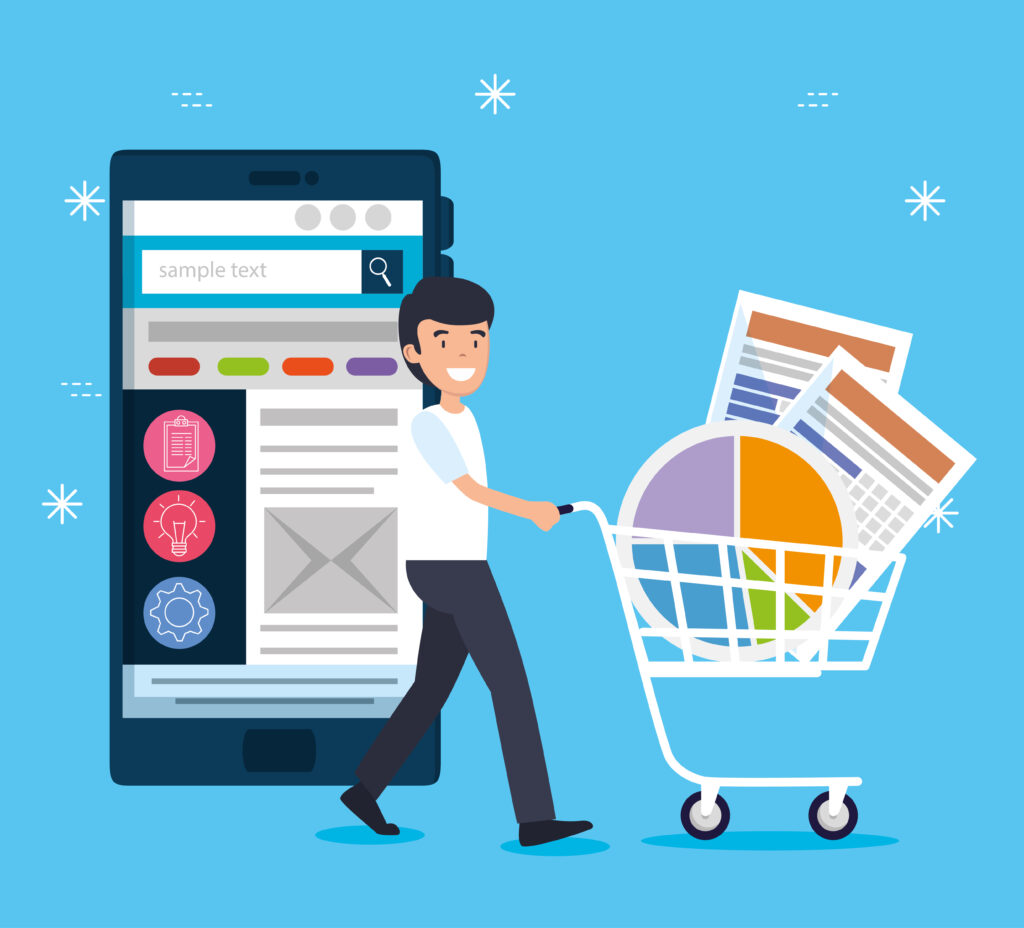
Key Takeaways
- Abandoned cart emails recover lost sales and boost revenue by reminding customers and providing an easy way to complete their purchase.
- Abandoned cart emails build customer relationships, increase brand loyalty, and encourage future purchases.
- Personalization and segmentation in abandoned cart emails enhance engagement and conversion rates.
- Abandoned cart emails offer upselling and cross-selling opportunities to maximize revenue.
- Abandoned cart emails gather valuable customer feedback for improving the overall shopping experience.
Imagine you’re shopping online, adding items to your cart with excitement, but then something happens, and you leave without completing the purchase.
This happens to many people, and it’s called cart abandonment. For businesses, it’s a frustrating challenge that can lead to lost sales.
But fear not! There are proven strategies to tackle this issue and boost your online success.
This article will explore practical and easy-to-understand best practices that will help you reduce cart abandonment.
These strategies will create a smooth shopping experience, gain customer trust, and ultimately increase your sales and customer satisfaction.
What are abandoned cart emails?

Abandoned cart emails are like helpful reminders that online stores send to customers who added items to their shopping carts but didn’t complete the purchase.
For example, imagine you were shopping for a new pair of shoes online, added them to your cart, but got distracted and left the website.
Shortly after, you might receive an email from the store saying, “Hi there! We noticed you left some amazing shoes in your cart.
Don’t miss out on them! Click here to complete your purchase.” This email reminds you about the shoes you liked and makes it easy to repurchase them.
Abandoned cart emails are sent to recover sales that might have been lost and provide a better shopping experience for customers.
Why should you send abandoned cart emails?
1. Recover lost sales
Abandoned cart emails are an effective strategy for recovering sales that would otherwise be lost.
Customers who add items to their cart but don’t complete the purchase might forget or get distracted.
By sending an abandoned cart email, you remind them about the products they were interested in and provide a convenient way to return and complete their purchase.
This gentle reminder can significantly increase the chances of recovering those lost sales and boosting your revenue.
2. Build customer relationships
Abandoned cart emails offer an opportunity to show proactive customer service and build stronger relationships with your customers.
By contacting them with a friendly reminder, you demonstrate that you care about their shopping experience and value their interest in your products.
This personalized interaction helps establish a connection, increases brand loyalty, and encourages customers to return and make future purchases.
3. Personalization and segmentation
Personalization and segmentation techniques can greatly enhance the effectiveness of abandoned cart emails.
You can tailor your emails to address specific needs and preferences by leveraging customer data and behavior.
For example, you can include the customer’s name, recommend related products based on their browsing history, or offer personalized discounts.
This level of personalization makes the email more relevant to the customer, increasing the likelihood of engagement and conversion.
4. Upselling and cross-selling opportunities
Abandoned cart emails can also be an opportunity to upsell or cross-sell additional products.
For example, if a customer has added a laptop to their cart, you can include laptop accessories or related software recommendations in the email.
By showcasing complementary products or highlighting upgrades, you can increase the average order value and maximize the revenue potential from the abandoned cart situation.
5. Customer feedback and improvement
Abandoned cart emails can serve as a means to gather valuable customer feedback.
You can include a brief survey or ask why the customer didn’t complete their purchase using some of the best survey tools available, which can provide valuable insights into customer behavior and preferences.
The feedback tool can provide insights into any barriers or issues in the buying process, allowing you to improve and optimize the customer experience.
By actively listening to your customers, you can address concerns and further enhance your business’s performance.
Abandoned cart email best practices

1. Timely delivery
Sending abandoned cart emails promptly is crucial for their effectiveness.
Aim to send the first email within the first hour of abandonment, as studies have shown this timeframe yields the highest conversion rates.
Follow up strategically with additional emails, such as a second email within 24 hours and a final reminder after a few days.
This cadence keeps your brand in mind and encourages customers to act.
2. Compelling subject line
The subject line of your abandoned cart email plays a pivotal role in capturing the recipient’s attention and enticing them to open the email.
Use attention-grabbing phrases, personalized details, or mention the abandoned items to create a sense of urgency and curiosity.
For example, you can use subject lines like “Don’t Miss Out on Your Dream [Product Name]” or “Your [Product Name] Awaits! Complete Your Purchase Now.”
3. Clear call to action
Make it easy for customers to return to their carts and complete their purchases by including a prominent and clickable call-to-action (CTA) button in your email.
The CTA should be concise and straightforward, using action-oriented phrases like “Complete Your Purchase” or “Return to Cart.”
Ensure that the button is visually distinct and easily clickable on both desktop and mobile devices for a seamless user experience.
4. Persuasive content
Craft persuasive and personalized email content that resonates with customers’ needs and motivations.
Remind them of the benefits and value they will receive by completing the purchase.
Highlight unique product features, showcase how the product solves a problem or fulfills a desire, and address any objections or concerns they may have expressed during their browsing session.
For instance, emphasize how the product will enhance their lifestyle or save them time and money.
5. Social proof and testimonials
Leverage social proof elements in your abandoned cart emails to build trust and credibility.
Include snippets of positive reviews, testimonials, or endorsements from satisfied customers.
This helps potential buyers feel more confident in completing the purchase by showcasing real experiences and satisfaction associated with your products.
For instance, include a short testimonial like, “Hear What Our Customers Love About [Product Name].”
6. Personalized recommendations
Take advantage of personalized recommendations based on the customer’s browsing or purchase history.
If they abandoned a specific item, you can suggest complementary products or related items they might be interested in.
By tailoring the recommendations to their preferences, you can increase the chances of upselling or cross-selling, leading to a higher order value and customer satisfaction.
7. A/B testing and analytics
Continuously test and analyze the performance of your abandoned cart email campaigns.
Experiment with different subject lines, content variations, and CTAs to optimize your conversion rates. Use analytics to track open rates, click-through rates, and conversion rates.
This data will provide insights into what strategies are working best for your audience and allow you to refine your approach over time.
How to reduce shopping cart abandonment
1. Simplify checkout process
A complicated and lengthy checkout process is a common reason for cart abandonment.
Simplify the process by minimizing the number of steps and form fields required. Consider implementing a progress indicator to show customers how far they are in the checkout process.
Additionally, offer guest checkout options that allow customers to complete their purchases without creating an account, reducing friction and saving time.
2. Display shipping and return policies
Clearly communicate your shipping and return policies to alleviate customers’ concerns.
Display this information prominently on your website, especially during the checkout process.
Clearly state delivery times, shipping costs, and return procedures to build trust and provide transparency.
Partner with a courier or shipping company you can trust to complete your deliveries and display their name during checkout.
Customers are more likely to proceed with their purchase when they have a clear understanding of your policies.
3. Optimize mobile experience
With the rising number of mobile shoppers, optimizing your website and checkout process for mobile devices is crucial.
Ensure that your website is responsive and mobile-friendly, adapting seamlessly to different screen sizes.
Optimize page loading speed to minimize wait times, simplify navigation for touchscreens, and offer mobile payment options like digital wallets for a frictionless mobile shopping experience.
4. Offer multiple payment options
Different customers have different payment preferences, so offering a variety of payment options can reduce cart abandonment rates.
Accept major credit cards, debit cards, and popular digital wallets like PayPal or Apple Pay.
Consider integrating alternative payment methods such as buy-now-pay-later services or cryptocurrency for customers who prefer these options.
Providing a diverse range of payment choices enhances convenience and caters to a broader customer base.
5. Streamline abandoned cart recovery
Implementing dedicated abandoned cart recovery tools or plugins can significantly improve your recovery efforts.
These tools automate the process of sending personalized abandoned cart emails and tracking customer activity.
Customize email templates with compelling content and include dynamic elements like product images and prices.
Schedule a series of follow-up emails to engage customers at strategic intervals. Utilize analytics provided by these tools to gain insights into customer behavior and continuously optimize your recovery strategy.
6. Exit intent pop-ups
Implement exit intent pop-ups that trigger when a customer is about to leave your website without completing the purchase.
These pop-ups can offer a discount, free shipping, or a special promotion to entice customers to reconsider their decision.
By providing an enticing offer right before they leave, you have a chance to capture their attention, address any hesitations, and potentially convert them into paying customers.
7. Remarketing campaigns
Utilize remarketing campaigns to re-engage customers who have abandoned their carts.
By using cookies and tracking pixels, you can target these customers with personalized ads across various platforms and social media networks.
Create compelling ad copies, highlight the abandoned products, and offer incentives to encourage customers to return to their carts and complete their purchase.
Final words
Reducing cart abandonment is like unlocking a treasure trove of potential sales for your online business.
By simplifying the checkout process, being transparent with policies, optimizing for mobile devices, offering various payment options, and leveraging advanced tools, you can make a real difference.
These practices will make it easier for customers to complete their purchases, building their confidence and loyalty.
Remember, understanding your customers and continuously improving based on their feedback is key.
So, implement these best practices and watch your cart abandonment rates decrease while your sales and business thrive in the exciting world of online commerce.
